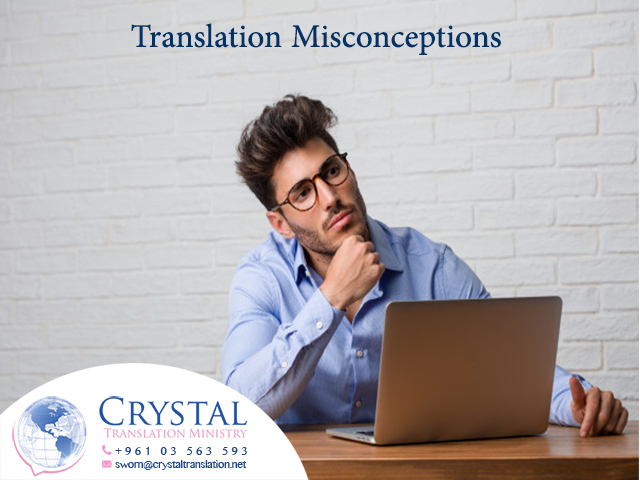Translation: what you think vs what it is.

Here are 8 misconceptions about translation. I can just use Google Translate? Translation should be fast and cheap? A translator is a dictionary? translation vs copywriting?
Translation: what you think vs what it is.
Here are 8 misconceptions about translation.
1. There’s no difference between translation and interpretation
Translators work with written materials while interpreters work on oral communications. The two activities actually require different skills. Interpreters need to be confident among people, possess great powers of concentration, and think fast...really fast.
Translators often work alone, they need to be good writers and researchers, and usually have more time to research and convert the content of their projects. Although some linguists do translation and interpretation, many focus on only one of these areas and on their talent.
2. Translation is substituting one word for another
It is rare that even a short translation can be a simple word for word substitution. A translator must covert many words that don’t have direct translations. Also differences in sentence structure and syntax mean that many sentences must be rearranged to sound natural in another language, a task underestimated by readers or seekers of translation services.
3. Translation should be fast and cheap
If translation were just substituting words, then all a translator would have to do is a mechanical task (maybe replace them with GOOGLE TRANSLATE) that shouldn’t take much time or effort, and, therefore, cost little. Instead, a translator generally has to put a good deal of thought into the best way to render your text in another language. A rule of thumb is that a translator can translate about 2,000 words per day. Review and proofreading require more time. So, you may be able to get fast and cheap somewhere, but it won’t be good, trustworthy or HUMAN.
4. There’s only one correct translation for any text
Because translation is more than word for word substitution, there are many ways of translating a particular text, depending upon the translator’s preferred style, vocabulary, and background. All of them may be correct as long as they transfer the same information accurately and grammatically.
5. I can just use Google Translate
There are still many companies that just connect their website to Google Translate assuming that this does the job for them. They are also many people who underestimate the pricing set by translator because they do not know what it takes to produce a “healthy” translation and assume GOOGLE TRANSLATE would do their job for free. If you don’t care how inaccurate, funny, or just plain incomprehensible your translation is, then this is the solution for you. However, if you want your website to reach international markets, using Google translate does not help your SEO.
6. My bilingual friends can handle my translations
Despite the fact that most business people wouldn’t assign just any employee to write marketing and technical copy, they persist in thinking that anyone who is bilingual can do their translations. Professional translators have to be good writers in their native language so that the translation is not just accurate but readable, grammatical and smooth. Even if you have a bilingual employee who is a good writer, that, does not necessarily mean they could do the job.
7. A translator is a dictionary
A translator is not a walking glossary. Translators need to have a background in the type of material being translated in order to be familiar with the terms used and be able to translate them into the appropriate words. They also need to do their research prior to the delivery of any project.
8. Translating marketing copy is no different than other translation….
Want to know more about translation vs copywriting?
Check it out in Part 2 of Translation: what you think vs what is.
Click here to Follow us on Facebook
14/5/2020

